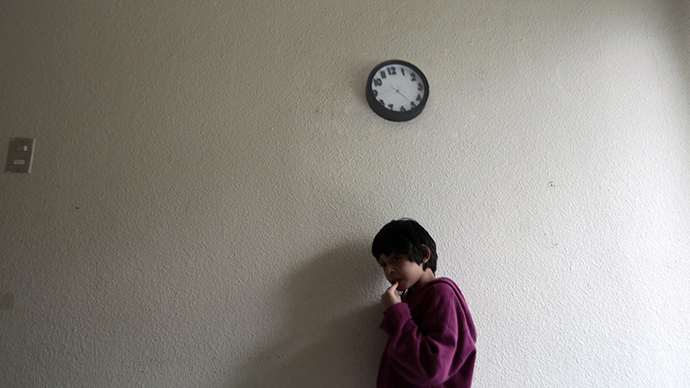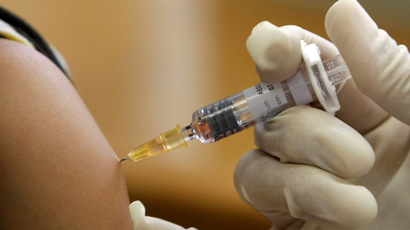Drug pruning extra synapses in brain can treat autism – study

Autistic children have an excessive amount of synapses, or brain connections between neurons, which doesn’t alter as it should with age, US scientists have revealed. This could help develop a drug normalizing their number even after diagnosis.
The results of the research, carried out by US neuroscientists at Columbia University Medical Center (CUMC), were published in the online issue of the Neuron journal on Thursday.
A main feature of autistic disorder is poor social interaction, along with communication difficulties and repetitive behavior. The brains of autistic people contain abnormal amounts of ‘synapses’ – connections between neurons through which information flows. The study hypothesizes that these excessive amount of signals correlate with brain dysfunction.
If a child’s development progresses normally, the process of synapse formation gradually slows down. It is highly active during infancy, but it becomes balanced through a process called ‘autophagy’, or pruning of unnecessary cells. Synapses are also formed in the cortex region of the brain, which is where autistic behaviors derive, should any abnormalities occur during early brain development. In other words, if synapses are not pruned, autism can occur.
“While people usually think of learning as requiring formation of new synapses,“ the study’s senior investigator, David Sulzer, PhD, Professor of Neurobiology in the Departments of Psychiatry, Neurology, and Pharmacology at CUMC said, “the removal of inappropriate synapses may be just as important.”

To analyze and compare the number of synapses in human brains co-author Guomei Tang, PhD, assistant professor of neurology at CUMC examined the brains of children and adolescents – with and without autism – who had died from other causes. Twenty-six brains from autistic kids and teens from the age of two to twenty were compared with twenty-two brains from those without autism.
Measurement of synapse density in each brain revealed an astonishing difference between the groups. The density reduced by almost 50 percent by late childhood in the control group, but autistic brains showed a drop of only 16%.
What is more, the brains of kids, who suffered from autism, contained neurons that consisted of old and damaged components – a fact that displays the vital necessity of autophagy, the ‘clean up’ process of a cell recycling its own parts.
“It’s the first time that anyone has looked for, and seen, a lack of pruning during development of children with autism,” Dr. Sulzer said, “although lower numbers of synapses in some brain areas have been detected in brains from older patients and in mice with autistic-like behaviors.”
Tests on mice and a protein called mTOR were carried out. If the protein was overactive, brain cells couldn’t clean and recycle themselves properly, and this led to excess synapses in the mice’s brains.
But there is a drug that suppresses mTOR: Rapamycin restores normal autophagy, and in the case of the mice reversed autistic trends in behavior. It also worked in cases when the mice had already developed abnormal behavior. It suggests the promise of treating people successfully after the disorder has been diagnosed.
“What’s remarkable about the findings,” said Dr. Sulzer, “is that hundreds of genes have been linked to autism, but almost all of our human subjects had overactive mTOR and decreased autophagy, and all appear to have a lack of normal synaptic pruning.”

However, it doesn’t mean that a perfect cure has been found. Scientists warn of the negative side effects of Rapamycin, a drug that is able to suppress the immune system.
“We don’t know if it’s this particular flavor of autism,” Dr. Boulanger, a molecular biologist at Princeton who didn’t participate in the research, told the New York Times. “This drug has really horrible side effects, and you don’t want to give it to everybody.”
The drug may only be good for lab mice, but the study itself shows future research strategy into autism has a new path to follow.
Currently, autistic disorders (ASD) are considered to be incurable and of genetic origin. One in 68 children in the US is diagnosed with ASD as of 2014, yet the direct cause of autism still remains unknown.














